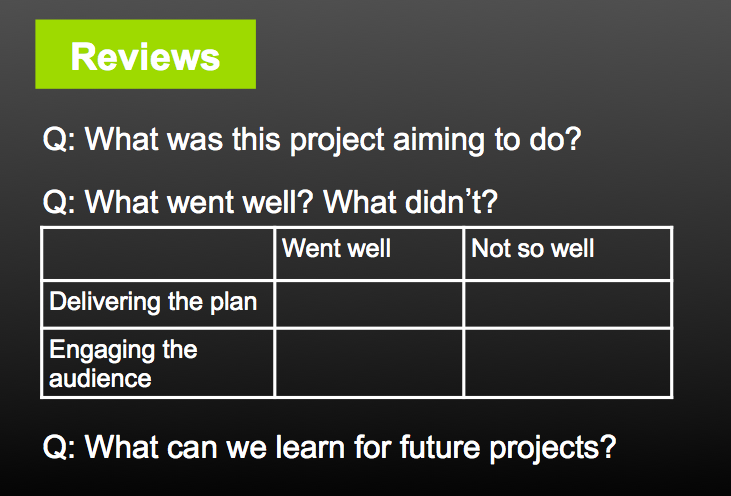I’ve recently been working on a mini project with a client to define the proposition for their digital channels, including looking at how well their website helps them achieve their goals.
In some sectors – like UK Government – there’s things like the Service Standard which help set out good practice. But for smaller, simpler websites looked after by two or three people, you need something a bit more down to earth, that helps you work out what needs improvement and prioritise your todo list a bit. If your website was a car, something like an MOT test, to tell you if any bits need urgent attention from a safety point of view.
Importantly – unlike an MOT – this isn’t a pass/fail thing or just a checklist to work through: it’s about areas to improve and problems to fix more or less urgently and it’s necessarily specific to an organisation and its audiences.
So here’s my list of the seven areas I think it’s worth looking at, and what good looks like for each:
1. User insight
How well do we understand who our users are and what they need?
Good looks like: having a defined audience and a grasp of what they actually need, getting feedback from them regularly and understanding their behaviour on our site using analytics tools
2. Clarity of purpose
How clear is our focus on what we need to achieve with our channels and does the website reflect that?
Good looks like: having clarity over who directs and manages the website, having a defined set of goals, measurable objectives, natural consistency across the website design/content etc that everything hangs together in service of those goals
3. Accuracy and readability
How well do we ensure our published content is up-to-date, and answers users’ questions in an engaging way?
Good looks like: tidy content which is routinely reviewed and updated, checked for accuracy, and presented in a way that is enjoyable to read or watch (even if you find reading or watching harder than others)
4. Navigation and accessibility
How far do we help users find information quickly – however they use our site?
Good looks like: a logical site structure, functioning search, good use of headings and links in pages, forms that are easy to complete, clear contact details, and clear signposting when the website can’t help
5. Search optimisation and performance
How easy is it to find us in search and does the site load quickly on any device?
Good looks like: short page loading times, tidy previews of content when shared on social media, a sitemap submitted to search engines, thought given to keywords and search results snippets when publishing content
6. Security and robustness
How well do we protect the site from attack and keep it running smoothly and users’ data secure?
Good looks like: actively maintained website e.g. regular CMS and plugin updates, an https:// certificate, proactive security measures to deter abusive or malicious traffic, careful management of users and passwords, automated checks for problems like broken links and alerts if the website is offline
7. Compliance
How far have we met our obligations under law?
Good looks like: clear published policies for user privacy and detail on our use of cookies, accessibility (known issues, contact details to report problems), a careful process for holding and processing data, respect for copyright and licensing when using images
I’ve used this to do a quick review of a site, and prioritise potential improvements, giving each area a colour-coded score from 1-5 (where 1 = weak and 5 = strong). We then went through this on a call and followed up with some links to tools or templates that might help address the gaps. You could do a more thorough job and identify examples or turn the ‘Good looks like’ into more of a checklist if you want.
Here’s a version of my seven areas above as a Word doc template (.docx). If you find it useful or can think of improvements, please let me know!
Photo by Andrea Piacquadio from Pexels

